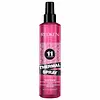What's inside
What's inside
 Key Ingredients
Key Ingredients

No key ingredients
 Benefits
Benefits

 Concerns
Concerns

 Ingredients Side-by-side
Ingredients Side-by-side

Water
Skin ConditioningDipropylene Glycol
HumectantPolysilicone-29
Silicone Quaternium-18
EmollientArgania Spinosa Kernel Oil
EmollientArtocarpus Heterophyllus Fruit Extract
Skin ConditioningAmaranthus Caudatus Seed Extract
Skin ConditioningParfum
MaskingPolysorbate 20
EmulsifyingTrideceth-12
EmulsifyingMethylpropanediol
SolventTrideceth-6
EmulsifyingCaprylyl Glycol
EmollientGlycolic Acid
BufferingPolyquaternium-80
CleansingCitric Acid
BufferingC12-13 Pareth-9
EmulsifyingHydrolyzed Quinoa
Skin ConditioningSodium PCA
HumectantSodium Lactate
BufferingDidecyldimonium Chloride
EmulsifyingArginine
MaskingAspartic Acid
MaskingPotassium Hydroxide
BufferingPCA
HumectantLactobacillus Ferment
Skin ConditioningGlycine
BufferingAlanine
MaskingAlgin
MaskingCaprylic/Capric Triglyceride
MaskingChitosan
Serine
MaskingValine
MaskingIsoleucine
Skin ConditioningProline
Skin ConditioningThreonine
Histidine
HumectantPhenylalanine
MaskingPhenoxyethanol
PreservativeSodium Benzoate
MaskingPotassium Sorbate
PreservativeBenzyl Alcohol
PerfumingLinalool
PerfumingAlpha-Isomethyl Ionone
PerfumingWater, Dipropylene Glycol, Polysilicone-29, Silicone Quaternium-18, Argania Spinosa Kernel Oil, Artocarpus Heterophyllus Fruit Extract, Amaranthus Caudatus Seed Extract, Parfum, Polysorbate 20, Trideceth-12, Methylpropanediol, Trideceth-6, Caprylyl Glycol, Glycolic Acid, Polyquaternium-80, Citric Acid, C12-13 Pareth-9, Hydrolyzed Quinoa, Sodium PCA, Sodium Lactate, Didecyldimonium Chloride, Arginine, Aspartic Acid, Potassium Hydroxide, PCA, Lactobacillus Ferment, Glycine, Alanine, Algin, Caprylic/Capric Triglyceride, Chitosan, Serine, Valine, Isoleucine, Proline, Threonine, Histidine, Phenylalanine, Phenoxyethanol, Sodium Benzoate, Potassium Sorbate, Benzyl Alcohol, Linalool, Alpha-Isomethyl Ionone
Water
Skin ConditioningAlcohol Denat.
AntimicrobialPEG-40 Hydrogenated Castor Oil
EmulsifyingPhenoxyethanol
PreservativeVp/Va Copolymer
Dimethicone PEG-7 Phosphate
CleansingParfum
MaskingPropylene Glycol
HumectantPolyquaternium-16
Sodium Citrate
BufferingPolyquaternium-6
Xylose
HumectantEthylhexylglycerin
Skin ConditioningCitronellol
PerfumingLimonene
PerfumingBenzyl Salicylate
PerfumingButylphenyl Methylpropional
PerfumingBenzyl Alcohol
PerfumingLinalool
PerfumingVaccinium Macrocarpon Seed Oil
Skin ConditioningOleamide
2-Oleamido-1,3-Octadecanediol
Skin ConditioningCinnamyl Alcohol
PerfumingHydroxyisohexyl 3-Cyclohexene Carboxaldehyde
MaskingHexyl Cinnamal
PerfumingGeraniol
PerfumingWater, Alcohol Denat., PEG-40 Hydrogenated Castor Oil, Phenoxyethanol, Vp/Va Copolymer, Dimethicone PEG-7 Phosphate, Parfum, Propylene Glycol, Polyquaternium-16, Sodium Citrate, Polyquaternium-6, Xylose, Ethylhexylglycerin, Citronellol, Limonene, Benzyl Salicylate, Butylphenyl Methylpropional, Benzyl Alcohol, Linalool, Vaccinium Macrocarpon Seed Oil, Oleamide, 2-Oleamido-1,3-Octadecanediol, Cinnamyl Alcohol, Hydroxyisohexyl 3-Cyclohexene Carboxaldehyde, Hexyl Cinnamal, Geraniol
 Reviews
Reviews

Ingredients Explained
These ingredients are found in both products.
Ingredients higher up in an ingredient list are typically present in a larger amount.
Benzyl Alcohol is most commonly used as a preservative. It also has a subtle, sweet smell. Small amounts of Benzyl Alcohol is not irritating and safe to use in skincare products. Most Benzyl Alcohol is derived from fruits such as apricots.
Benzyl Alcohol has both antibacterial and antioxidant properties. These properties help lengthen the shelf life of products. Benzyl Alcohol is a solvent and helps dissolve other ingredients. It can also improve the texture and spreadability.
Alcohol comes in many different forms. Different types of alcohol will have different effects on skin. This ingredient is an astringent alcohol.
Using high concentrations of these alcohols are drying on the skin. They may strip away your skin's natural oils and even damage your skin barrier. Astringent alcohols may also irritate skin.
Other types of astringent alcohols include:
According to the National Rosacea Society based in the US, you should be mindful of products with these alcohols in the top half of ingredients.
Any type of sanitizing product will have high amounts of alcohol to help kill bacteria and viruses.
Learn more about Benzyl AlcoholLinalool is a fragrance and helps add scent to products. It's derived from common plants such as cinnamon, mint, citrus, and lavender.
Like Limonene, this ingredient oxidizes when exposed to air. Oxidized linalool can cause allergies and skin sensitivity.
This ingredient has a scent that is floral, spicy tropical, and citrus-like.
Learn more about LinaloolParfum is a catch-all term for an ingredient or more that is used to give a scent to products.
Also called "fragrance", this ingredient can be a blend of hundreds of chemicals or plant oils. This means every product with "fragrance" or "parfum" in the ingredients list is a different mixture.
For instance, Habanolide is a proprietary trade name for a specific aroma chemical. When used as a fragrance ingredient in cosmetics, most aroma chemicals fall under the broad labeling category of “FRAGRANCE” or “PARFUM” according to EU and US regulations.
The term 'parfum' or 'fragrance' is not regulated in many countries. In many cases, it is up to the brand to define this term.
For instance, many brands choose to label themselves as "fragrance-free" because they are not using synthetic fragrances. However, their products may still contain ingredients such as essential oils that are considered a fragrance by INCI standards.
One example is Calendula flower extract. Calendula is an essential oil that still imparts a scent or 'fragrance'.
Depending on the blend, the ingredients in the mixture can cause allergies and sensitivities on the skin. Some ingredients that are known EU allergens include linalool and citronellol.
Parfum can also be used to mask or cover an unpleasant scent.
The bottom line is: not all fragrances/parfum/ingredients are created equally. If you are worried about fragrances, we recommend taking a closer look at an ingredient. And of course, we always recommend speaking with a professional.
Learn more about ParfumPhenoxyethanol is a preservative that has germicide, antimicrobial, and aromatic properties. Studies show that phenoxyethanol can prevent microbial growth. By itself, it has a scent that is similar to that of a rose.
It's often used in formulations along with Caprylyl Glycol to preserve the shelf life of products.
Water. It's the most common cosmetic ingredient of all. You'll usually see it at the top of ingredient lists, meaning that it makes up the largest part of the product.
So why is it so popular? Water most often acts as a solvent - this means that it helps dissolve other ingredients into the formulation.
You'll also recognize water as that liquid we all need to stay alive. If you see this, drink a glass of water. Stay hydrated!
Learn more about Water